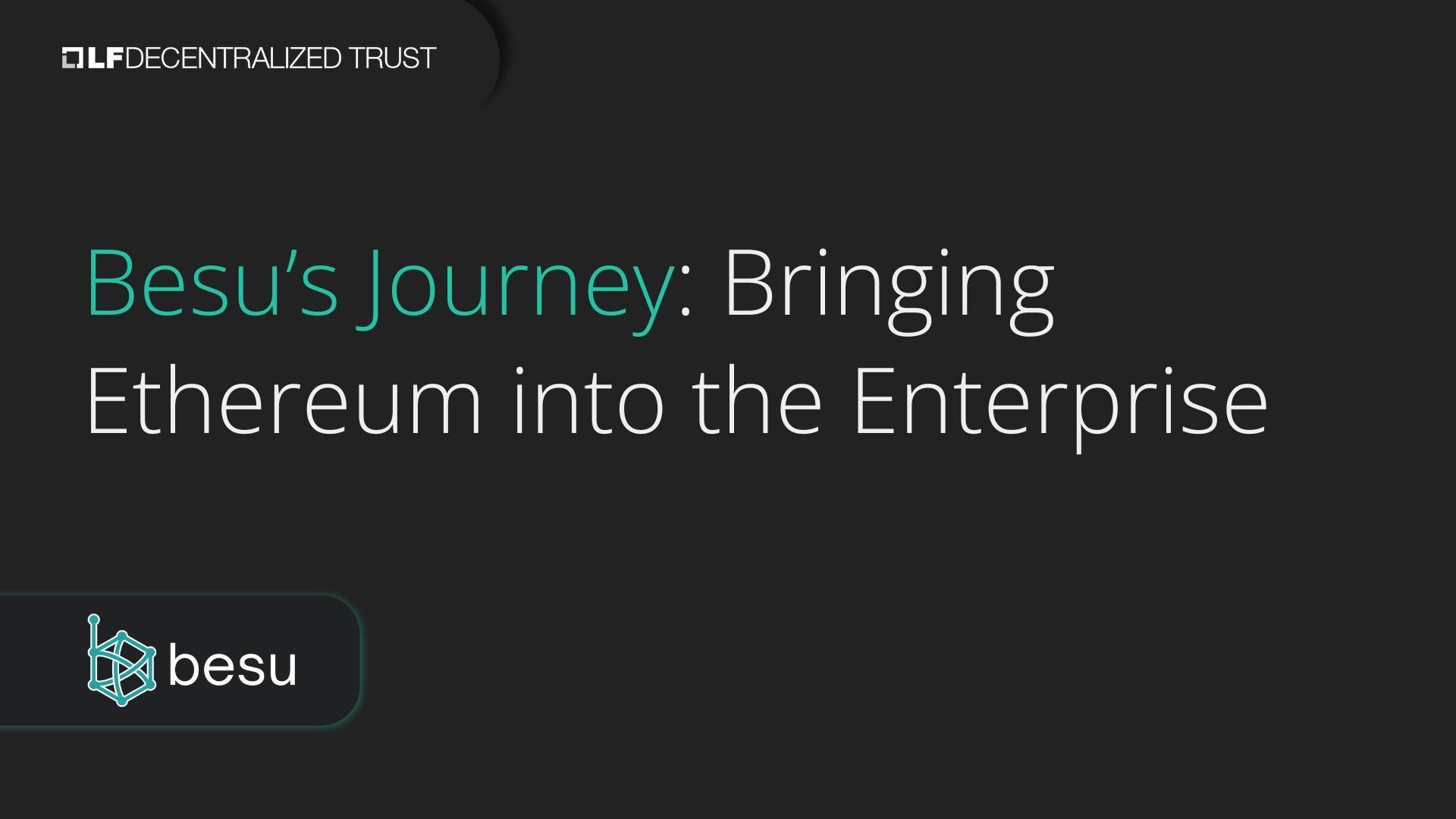Besu’s Journey: Bringing Ethereum into the Enterprise

From its inception in 2019, Besu was designed as an EVM (Ethereum Virtual Machine) client for permissioned and public networks, delivering enterprise-grade capabilities across a mix of use cases. As it has matured, Besu has played an increasingly important role in the Ethereum ecosystem.
Besu in the mainnet
Client diversity is essential to the security and stability of the Ethereum network. Over the last six years Besu (previously Hyperledger Besu) has made a vital contribution to that diversity. The only Java-based Ethereum execution client, Besu now represents approximately 16 percent of mainnet Ethereum nodes.
Over those six years, the Ethereum network has seen a number of key enhancements that Besu inherits including the:
- London fork and its associated fee-market improvements;
- Paris fork/merge and the realisation of Ethereum’s migration to proof-of-stake;
- Dencun fork with blob storage to dramatically reduce L2 fees; and
- most recently, Pectra fork, a key milestone on the journey to a more highly scalable Ethereum network.
Through this evolution, Besu maintainers have not only been building and maintaining a performant, robust Ethereum client. They have been designing and planning those features through their involvement in and contributions to the Core Dev community.
Besu in the enterprise
But Besu goes beyond the public Ethereum space. As a technology, Ethereum has become an essential component in the next generation of distributed architectures for financial institutions. According to analysis by Blockdaemon, Besu is the leading client implementation for enterprise Ethereum blockchains.
At Kaleido, where we have a team of developers maintaining enterprise features for Besu and driving the enterprise Besu roadmap, we see the project as the strategic offering in the permissioned chain space. In these environments, with 10s rather than 1000s of nodes, client diversity is less important than features such as enterprise-friendly licensing, performance, data integrity, instant finality, and compliance. In this space, Besu and its modular features again lead the market with its production-grade proof-of-authority consensus algorithms.
Tailoring Besu for enterprise needs
As maintainers of Besu and leaders of its enterprise roadmap, which is guided by the requirements of institutional users, Kaleido has helped ensure that enterprises get all of the benefits of Ethereum without needing to move at the same pace as the public network. We understand that enterprises don’t want to upgrade their installations every week or even every month. However, they do want to know that when they upgrade, their network software will be stable and thoroughly regression tested.
When it comes to Ethereum Improvement Proposals (EIPS), there is some separation between mainnet and enterprise requirements. For example, releases focused on public chain scalability may be less relevant to enterprise chains. Enterprises also need clearly defined deprecation timelines and migration paths for legacy features. Finally, enterprises may continue to use features from historic forks well beyond the time that Ethereum mainnet dropped them.
Due to their nature, enterprises have needs relating to regulatory requirements, privacy, and interoperability that drive the decisions Besu maintainers make. The experience and maturity of the Besu maintainer community in balancing these deployment needs ensures Besu continues to be the best offering for enterprise users without impinging on its ability to maintain pace with the public network.
Collaborating to serve all Ethereum environments
Public Ethereum and permissioned Ethereum have many overlaps, which leads to collaboration between maintainers across both use cases. The requirements of the public network led Besu enterprise maintainers to re-architect the database storage format to reduce the time to synchronize new nodes (the Bonsai DB format). Compliance requirements of enterprise networks drove that enhancement forward with new features to allow enterprises to build archive nodes on this new format. Both environments benefit from the motivations of the other.
A big focus of the Besu maintainer community in the past 12 months has been on making the codebase more streamlined and easier to manage. Work has begun on making some of the enterprise features such as the QBFT consensus algorithm pluggable. This work, along with removing deprecated features that have moved up into the app layer, such as private transactions and Tessera, which has been superseded by Pente in the LF Decentralized Trust Paladin codebase, paves the way for a leaner core Besu. It also makes the Besu codebase more focused on the EVM specification. As a result, enterprise features can be developed more rapidly and incorporated at build time into an enterprise version of Besu, combining the core runtime and the enterprise features into a single enterprise Besu image.
(See more about the roadmap in this webinar.)
As we look to the future, we see Besu evolving into a more modular architecture. Its plugin interface will grow to allow more functions to be customizable. This will allow the lifecycle of individual features to be separated from each other and delivered at an appropriate cadence for its users. We encourage developers to join the growing Besu community by contributing plugins for consensus algorithms, observability, zero knowledge frameworks, and more.
With the accelerating adoption of Besu, we expect the public and permissioned spaces to continue collaborating on features, improvements, and strategy over the coming years. We welcome the development challenges and invite you to get involved:
Find us on Discord here.
